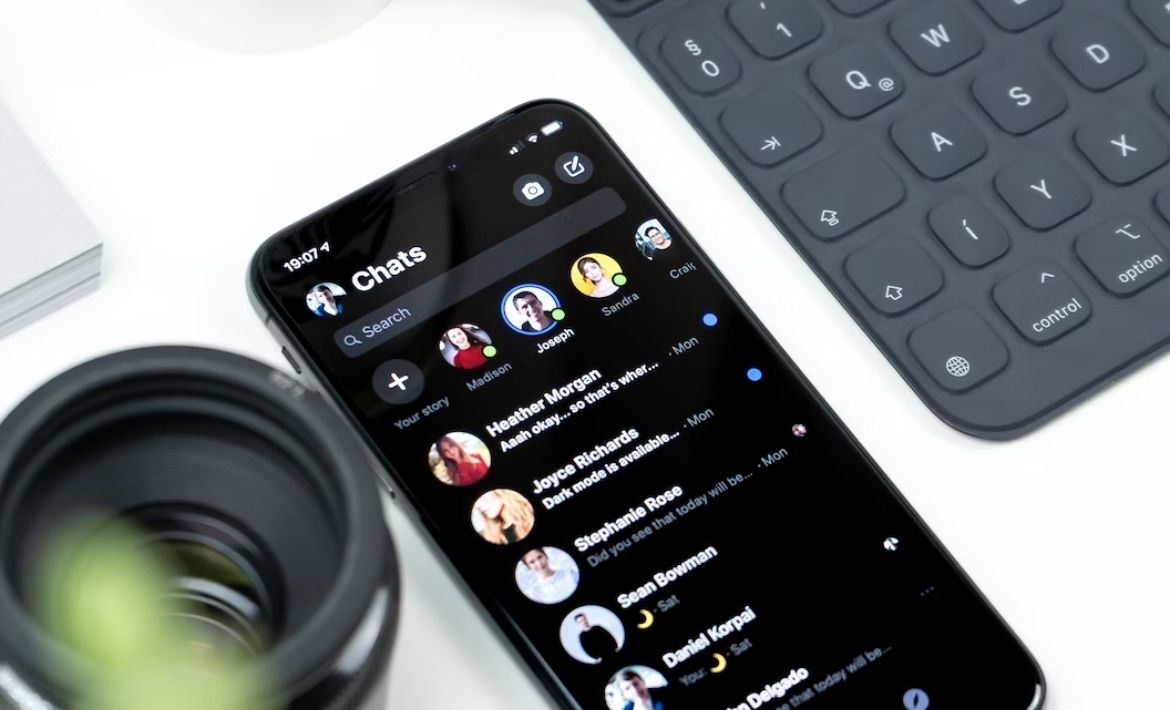Hey stranger!
See, you started reading because you’re interested in what I will say next.
BUT!
How much more interested would you be in this article if I called you by your name straight away… How does she know my name? Why did she use it? Did she write this article just for me?
See, that’s the power of personalisation, even on a pretty basic level.
But there’s much more to successful personalisation than using your lead’s name.
Read this article to discover what else you can do to personalise communication with leads and customers and how CRM data can help you.
The benefits of personalising communication with leads and customers
For many businesses, personalising the customer experience remains one of the biggest challenges. A decent level of personalisation can be challenging as it’s often time-consuming, laborious, and expensive.
A lack of trust and poor personalisation could be costing U.S. businesses as much as $756 billion in lost revenue every year
🗣️ Accenture
Still, lack of personalisation could cost your business even more. This fact makes the must-do-can’t-miss nature of deep personalisation of customer experience pretty obvious.
However, there are other benefits personalising your communication with leads and customers can give you. Just to name a few…
- Personalised communication helps you build an instant rapport with your potential customers. This is particularly valuable for B2B companies as sales are primarily built upon personal relationships between businesses and customers
- It humanises your brand and makes you more approachable. Instead of seeing a large, faceless corporation pitching their product in a mass-send email campaign, leads get a chance to notice a real person behind the message.
- Customers expect their data to be used to their advantage — they want to receive personalised offers. Up to 66% of consumers hope brands understand their individual needs and adjust their offers accordingly.
- It increases your customers’ lifetime value (LTV). Around 70% of consumers say that how well a company understands their individual needs impacts their loyalty.
- It helps you stand out from your competitors. Despite all the benefits of personalisation, at least 38% of businesses aren’t undertaking personalisation in their marketing or sales processes.
Personalisation helps businesses establish more robust relationships with their target audience, generate more sales, and grow.
How to create a more personal customer experience with the help of CRM data
To leverage the benefits of personalisation, you need to get on top of your personalisation strategy and invest in the right tools. One of those tools is a trustworthy CRM system.
To understand why CRM software is an essential tool in making the personalisation of communication with leads and customers possible, you need to learn about the key personalisation challenges businesses face: Incomplete data and organisational mistakes.
Personalisation starts with data. Data — the quality and quantity — is the most important instrument for achieving convenience, relevance, speed, and timing to drive continuous website visits, purchases, and quality engagement.
The main problem businesses encountered was scarcity of data. Today, the opposite is true.
Companies obtain large volumes of data about their customers. Still, because the customer journey becomes more complex and non-linear, this data gets spread across various channels, platforms, and sources. Unless stored in a single silo, some details get easily lost, resulting in incomplete customer profiles that stall effective personalisation of communication.
CRM software helps gather all your customer data in one place, structures it, and effectively manages it.
Storing all the customer information in a single location isn’t the only benefit a CRM system can provide. CRM data itself can be of use when personalising the customer experience. We’ve compiled a list of ways you can create a more personal customer experience with the help of CRM data.
Know your clients by their name: {Name}
You can start your email with a… “Hello, our very valued customer!" or with… “Hello, John”
From a linguistic point of view, the difference between the two isn’t too drastic. From a business perspective, it’s enormous. People love hearing the sound of their name — it’s their favourite sound in the whole world.
A person’s name is, to that person, the sweetest, most important sound in any language.
Mentioning your lead’s or customer’s name while reaching out to them makes your message more valuable and approachable. You’re not addressing a faceless crowd; you’re speaking to a customer directly. Besides, when you truly value your customer and your relationship, you’d at least know their name, wouldn’t you?
There are thousands of scenarios where using name-based personalisation solidifies your positions and deepens the bond between your business and your customers.
Example. When you’re appealing to a customer on an emotional level or trying to encourage them to take action. A great piece of evidence to back this point is the American Cancer Society, which paired its fundraising process with the use of participants’ names. This campaign resulted in a 34% increase in fundraising.
Other benefits of knowing your leads and customers by their names and actively using those names in your communications include…
- Brings you back to the conversation
- Conveys competence
- Builds loyalty
Despite the importance of remembering everyone’s name, when you scale your business and get faced with hundreds and hundreds of new names, it can be challenging to stay on top of your name game. That’s where CRM software comes into play.
With a CRM system, you can easily remember every customer’s name as all of them are stored securely in a single database. When you need it, you can look it up or even automate personalisation by using macros when composing your emails.
Know your lead’s area of influence: {Job Title}
No matter how important knowing your customer’s name is, it’s just the tip of the iceberg.
Customer experience personalisation stretches far beyond calling customers by their name — you need to personalise their entire journey.
Another essential detail about the person you’re reaching out to is their job title. While it’s unlikely that you’ll address their position directly a lot, knowing it can change the quality of your communication by a lot.
It gives better insight into their business routine
When you know your lead’s job title, you can get at least a rough idea of what they do at their company daily. Unless the lead you’ve contacted works at a super unique organisation, it’s likely their business workload is similar to others in the same position in the same industry. You can predict the processes they handle, the problems they face, and the frustrations they deal with.
The latter can be a great ice breaker for when you just start your conversation, and the rest can help you craft a better line of communication.
Remember, personalisation is all about value-based selling. You don’t sell features; you sell outcomes.
Example. You’re a CRM vendor pitching your product to a potential customer. You should remember that salespeople are more likely to care about lead capture and lead generation. In contrast, Customer Support is more interested in what your CRM system offers for ticketing. You need to discuss the respective functionalities in your message.👇
“For {Sales Managers} as you, our CRM system can streamline the process of capturing leads, distributing tasks among sales reps, and send out notifications for when something noteworthy happens in the sales pipeline…”
“For {Marketing Managers} like yourself, our CRM system can help with email marketing, including sending emails in bulk, assessing the results of campaigns, and identifying the most effective sources of leads…”
It gives you an idea of their level of authority
The tone of voice and the offer you make in your pitch depend on the lead’s seniority. If you’re talking to a sales rep or a junior marketing specialist, it’s unlikely that they’ll have a lot of decision-making power. You should keep that in mind when crafting your message.
You’d likely have to describe the benefits of your product on a surface level, encouraging a recipient message to pass this information on to their manager.
If you’re lucky enough to get your hands on the CEO’s or top manager’s contact information, you can go all out and be more persistent in describing the benefits of investing in your product or service.
Don’t forget the important dates
You need to make sure you don’t only remember every anniversary, birthday, and holiday, but also prepare a gift to celebrate them all. You can use your CRM system to keep track of all these dates and either remind you of them or send out cards automatically.
Example. Configure an automated email with a couple of heartwarming words and a special occasion offer to celebrate a milestone in your relationship with a customer, their birthday, or a national holiday.
Pay special attention to birthdays...
- Birthday emails have a 481% higher transaction rate than promotional emails
- Birthday emails generate 342% higher revenue per email than promotional emails
- Birthday emails have 179% higher unique click rates than promotional emails
Win customers back by making personalised offers that your leads can’t turn down: {Reason Lost}
Customer churn, no matter how sad, is a normal thing. Even with the best product on the market, you can’t win 100% of the deals that enter your sales funnel. You can maximise the percentage of successfully landed deals by personalising your communication with each lead and customer, getting a second chance at selling.
To do this, you need to find out why a particular customer has churned and record this information in CRM. While some customers can’t be recovered — for example, when a company went bankrupt or has chosen a different vendor over you — others are worth a second shot. Segment your past customers and failed deals based on the reason lost and target them with hyper-personalised win-back campaigns.
Here are some examples…
Reason lost: Too expensive
Usually, there isn’t such a thing as ‘too expensive’.
It all boils down to whether or not your potential customers see the value they can get out of your product or not. If there’s a lot of value, they’ll pay any price to get their hands on a product. Set up an automated lead nurturing sequence to educate your customers on the goals your product can help them achieve.
Alternatively, reach out to such contacts when running seasonal programs, or have substantial discounts. Add them to the campaign and offer them a discount on your product.
Reason lost: Lack of functionality
Create a separate view for those deals that were lost because your product lacked some functionality. If you’re continuously working on developing your product, it’s likely that you’ll soon add those features and be ready to boast an upgraded version of the old product that might be able to win those lost customers back..
Make sure to mention the exact functionality your lost customer expected so that you can personalise your offer.
You can still craft more personalised offers without knowing the reason lost by knowing your lead’s pain points. Use CRM data to access the history of your communication and better understand the needs and wants of your potential customers, even the ones they’re yet to realise.
Appeal to your lead’s interests: Tags
Your ultimate goal is to ensure every piece of content that reaches your lead or customer is attractive to them.
Every email, call, and newsletter must contain relevant and valuable information. Otherwise, contacts quickly unsubscribe from your marketing campaigns or even block you, negatively impacting your deliverability rates.
When a new lead enters your sales pipeline, collect as much information about them as possible. Ideally, you should know the source that brought them in, their content preferences, and when they want to hear from you.
Based on this information, you can use your CRM to add tags to contact records and subsequently segment your audience into smaller groups.
For example…
- If a lead entered the sales funnel after exchanging their contact information for some gated content about lead generation, sales automation, or prospecting, give them the {Sales} tag
- If it’s the email marketing or content marketing eBook or checklist that generated a new lead, they should be categorised as {Marketing}
- If you acquired a lead through a demo call booking web form on your website add the {Product} tag
- If a lead came from a webinar on a particular topic and would like to know more about a specific feature, make sure to add the {Feature} tag and send appropriate content
Once you have your categories ready, you can personalise your content to match the interests of each group and make your emails as targeted as possible.
Quickly identify upselling and cross-selling opportunities: {User} and {Non-user}
Another important tag that you can add to each contact’s record is “user” and “non-user”.
You can segment your audience into two categories based on these tags — those already using your product and those not using it. Doing this is vital as you don’t want to promote your product to the people that are already with you.
Those not using your product are ripe for a regular old sale; people that are already using your product can be an easy target for upselling or cross-selling. Use CRM data to identify the problems they were looking to solve with your product and offer the advanced functionality to bring them even greater success.
Track customer behaviour: {Opened}, {Clicked}, {Responded}
If you’re looking to adopt a truly personalised approach to every person in your sales funnel, you need to have a good understanding of behaviour.
- When are they down to talk to you?
- Which emails do they open, and which ones do they ignore?
- How often do you need to follow up before you get a response?
- Which follow-ups work best and which don’t bring the expected results?
Once you track all that information with the help of your CRM, you can crack the formula to the perfect message.
Tailor your content to the customer’s stage in the buyer’s journey: {Stage}
Not all leads are interested in the same content. Not because they don’t want it, but because they don’t need it. At different stages of the sales funnel, customers are keen to learn about different things.
So, for those at the top of the funnel, broad, shareable, visual attention-grabbing content will have the most impact at the Awareness stage
For customers in the Consideration stage, you should prepare factual and informative content to facilitate an informed decision.
As you reach the bottom of the funnel, the Decision stage of the buyer’s journey, try to disseminate content that would compare your offer against the offers from competitors and make your value proposition clear.
Learn more about the types of content people are interested in at different funnel stages in this article.
You can use your CRM data to understand where in the funnel your lead is, either based on the time since they’ve entered the pipeline, their inquiries, or the source that brought them in.
Then, you can either set up automated sequences to disseminate the appropriate content for when a lead enters the next stage or do it manually.
If you want to wow your leads and further personalise your communication, consider implementing messenger-based sales.

Table of Contents
Crack the sales formula with CRM Lab
Twice a month, receive actionable CRM content to your inbox.






